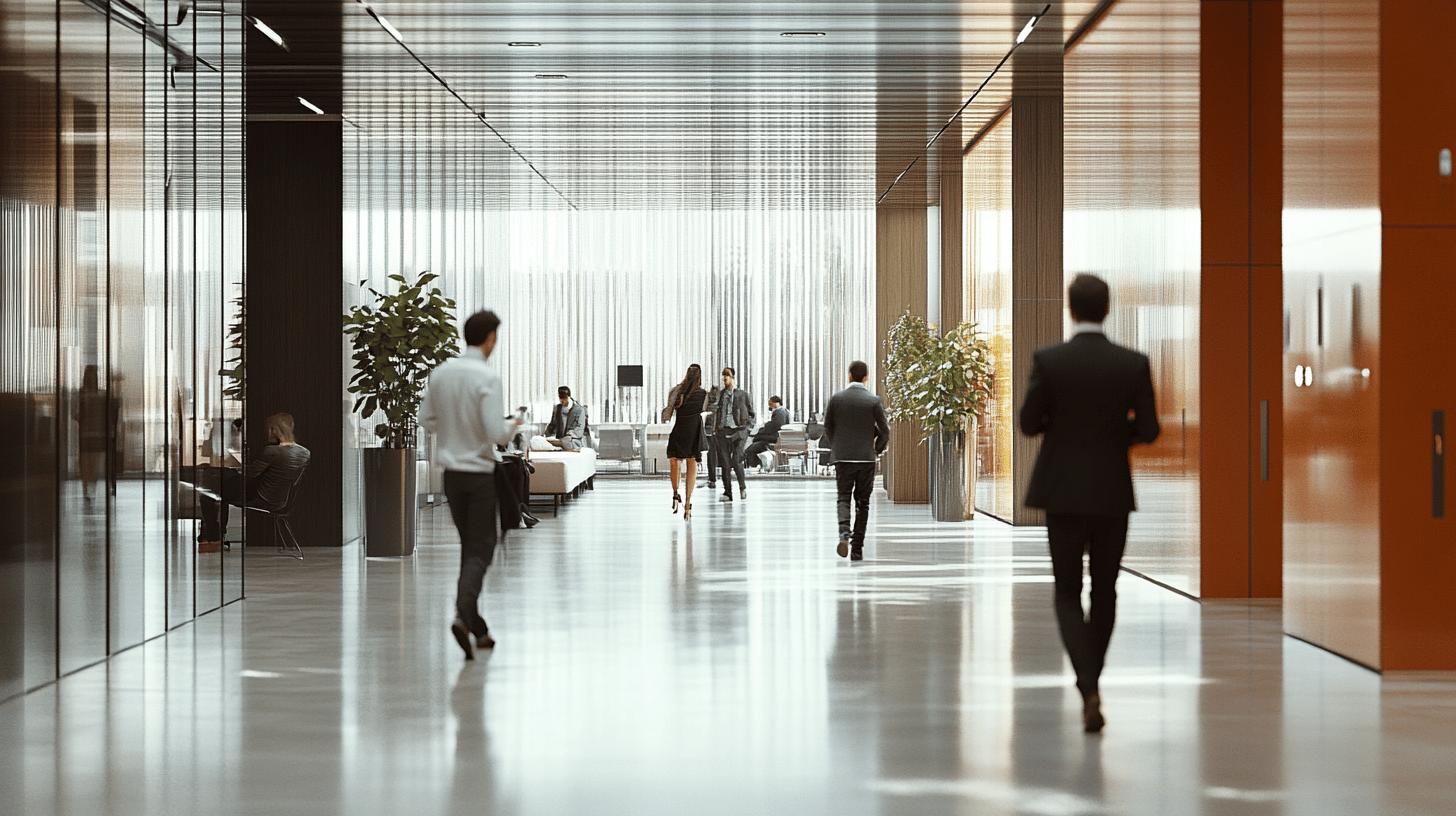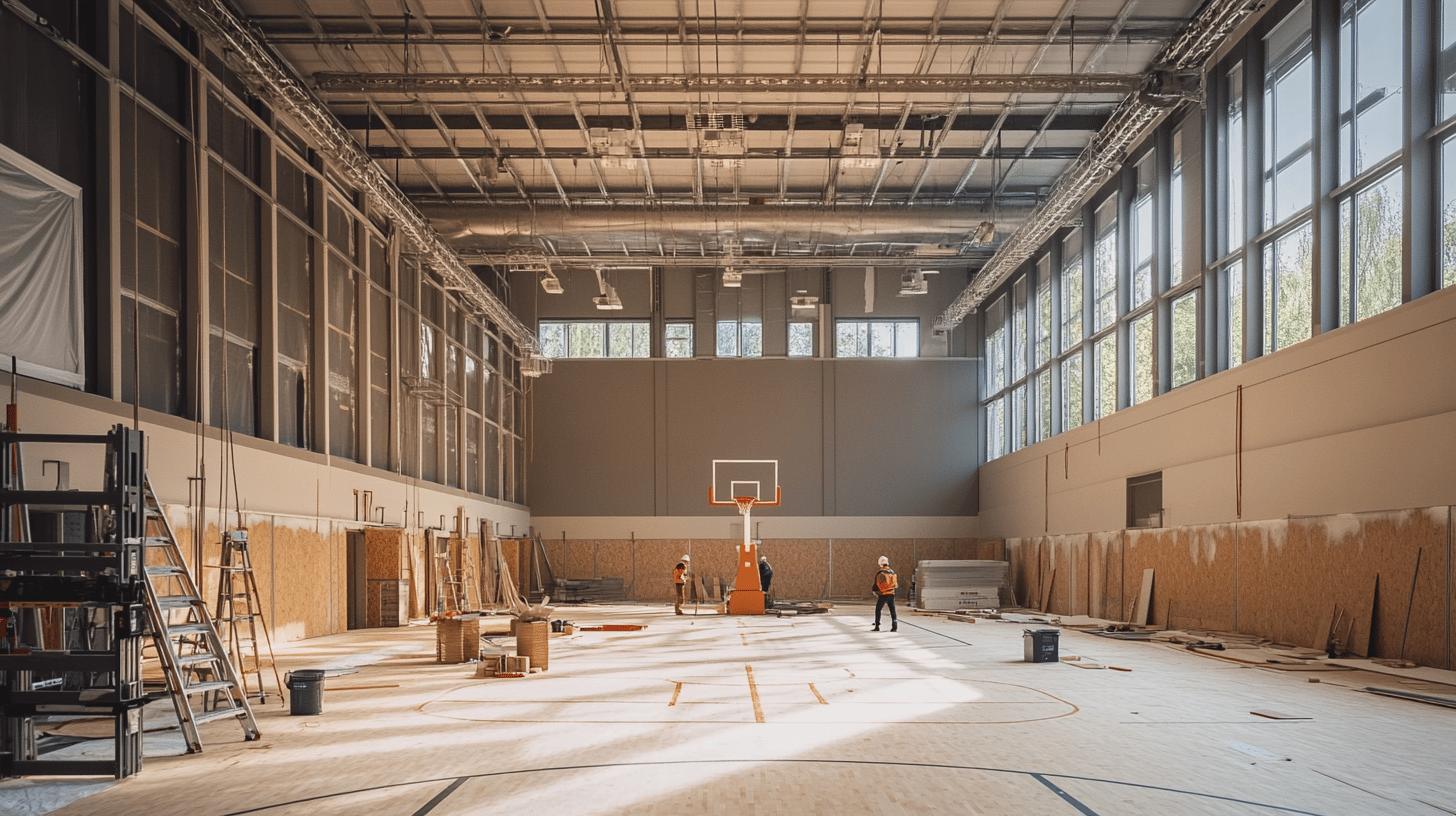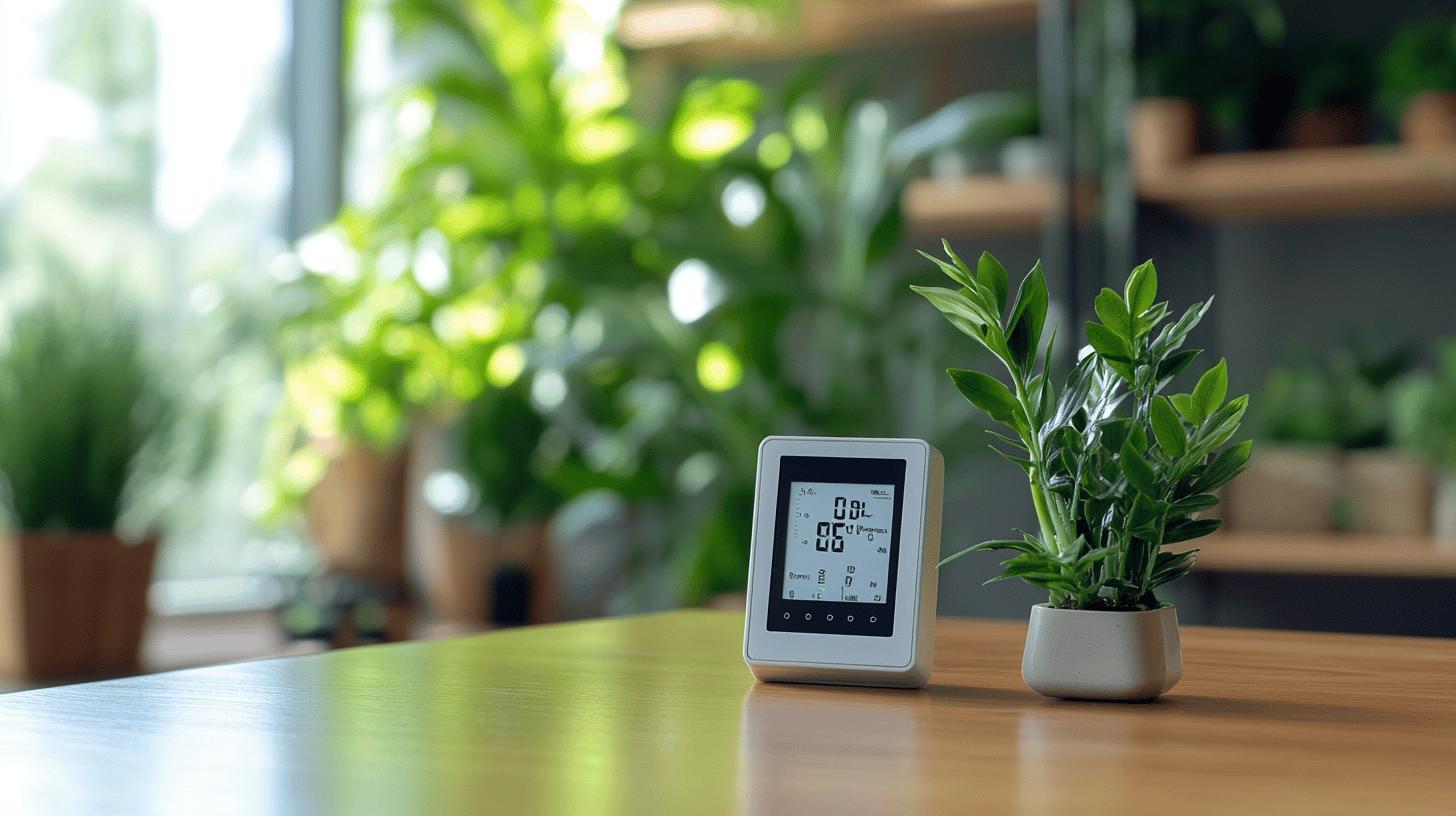Have you ever thought about how the colours on a sports court might affect the game? It turns out, there’s a lot more to it than just making things look nice. The colours used in court markings can actually play a big part in how players feel, how well they see the ball, and even how a whole team performs. It’s all about understanding Colour Psychology in Court Markings and using it to give teams a real boost.
Key Takeaways
- Court colours can really change how players feel and act during a game.
- Picking the right colours helps everyone see better, which means quicker reactions and less eye strain.
- Using team colours and logos on the court helps build team spirit and a sense of belonging.
- Different court colours can affect how a game plays out, like how fast or calm players might be.
- Custom court designs can give teams a mental edge and help them feel more confident and unified.
.
Understanding Colour Psychology in Court Markings

It’s easy to overlook, but the colours used in sports court markings can have a surprisingly big impact. We’re not just talking about aesthetics here; the colours can actually affect how players feel and perform. Let’s have a look at how colour psychology plays a role in court design.
The Impact of Hues on Player Emotions
Colours have a direct line to our emotions. Think about it: red can feel energetic and exciting, while blue often brings a sense of calm. These emotional responses can translate directly onto the court. A team playing on a court with dominant red tones might feel more aggressive, while a blue court could encourage a more strategic, composed approach. It’s all about understanding how different hues can influence player behaviour and energy levels.
Unravelling the Psychology of Colours in Basketball Court Design
Basketball court design is more than just slapping down some paint. The colours used can affect everything from player focus to overall team morale. For example, using contrasting colours for the key areas can help players quickly identify important zones, improving their reaction times. It’s about creating a visual environment that supports optimal performance. The right colour scheme can even contribute to a team’s sense of identity and pride. Consider how line markings define the boundaries of play, and how colour can enhance this.
How Court Colour Affects Player Performance
The colour of a sports court isn’t just a matter of taste; it’s a strategic decision that can influence player performance. By carefully selecting colours that promote focus, energy, or calmness, coaches and facility managers can create an environment that gives their team a psychological edge.
Here are some ways court colour can affect performance:
- Focus: Certain colours can help players concentrate and reduce distractions.
- Energy: Brighter colours can boost energy levels and create a more dynamic atmosphere.
- Mood: Calmer colours can promote a sense of composure and strategic thinking.
.
Choosing the right colours is about understanding the psychological impact they have and using that knowledge to create a court that supports the desired outcomes.
Optimising Visibility and Focus Through Court Colours
Visibility and Focus: Why Colour Matters
When you’re playing a fast-paced sport, seeing the ball clearly is vital. The colour of the court plays a massive role in how well players can track the ball, see their opponents, and make quick decisions. Good colour choices create contrast, which helps reduce eye strain and speeds up reaction times. It’s all about making the game easier on the eyes so players can perform at their best.
Ensuring Optimal Colour Contrast for All Participants
It’s not just about the players; referees and other officials need to see clearly too. Optimal colour contrast makes sure everyone can easily spot key elements of the game. This helps the game run smoothly and fairly. Think about it – clear lines, distinct zones, and an easily visible ball all contribute to a better experience for everyone involved.
Strategic Colour Choices for Enhanced Gameplay
Choosing the right colours isn’t just about aesthetics; it’s a strategic decision that can directly affect how the game is played. Different colours can influence a player’s mood and energy levels. For example, a bright, vibrant court might energise players, while a more muted tone could help them stay calm and focused. It’s about creating an environment that supports the desired gameplay.
Consider the impact of colour on player perception. A well-chosen colour scheme can improve depth perception, making it easier for players to judge distances and react accordingly. This can be particularly important in sports like tennis or basketball, where split-second decisions can make all the difference.
Here’s a simple breakdown of how different colours might affect gameplay:
- Blue: Calming, promotes focus.
- Green: Natural, reduces stress.
- Red: Energetic, can increase intensity.
- Yellow: Cheerful, enhances visibility.
.
Integrating Team Identity with Court Markings
Team Spirit: Branding and Aesthetics
For sports facilities linked to specific teams or sponsors, adding team colours or branding to the court design gives a unique touch. This goes beyond just looks; it’s about celebrating team spirit and identity. The basketball court becomes a visual representation of the team’s values, creating a sense of belonging among players and fans. The court colour becomes a tool for team building and community engagement.
Beyond Colour: Logo Integration and the Art of Custom Designs
For a personalised touch, consider adding logos and custom designs. This improves the court’s look and provides branding for teams and sponsors. It’s about turning a basketball court into a canvas for artistic expression and brand representation. Customisation can really make a difference.
Creating a Unified Team Identity
Court markings can play a big role in creating a unified team identity. Here’s how:
- Colour Coordination: Use team colours in the court markings to visually link the team and the playing area.
- Logo Placement: Strategically place the team logo on the court to reinforce brand recognition and team pride.
- Custom Designs: Incorporate unique designs that reflect the team’s history, values, or mascot.
.
A well-designed court can boost team morale and create a stronger sense of unity. It shows attention to detail and a commitment to creating a professional and inspiring environment for the players.
Popular Court Colours and Their Influence
Popular Tennis Court Colours and Their Influence on Gameplay
When it comes to tennis, the colours you see on the court aren’t just for show. They can actually have a real impact on how players perform. The best colour choices consider visibility and contrast. Think about it: you need to see the ball clearly and react quickly. The colours used can either help or hinder that process. For example, a good contrast between the ball and the court surface can reduce visual stress and speed up reaction times. This is why you often see combinations like green and blue, or green and tan. These colours provide good visibility without being too harsh on the eyes. It’s all about finding that sweet spot where players can focus and perform at their best. The best tennis courts take these factors into account.
The Role of Colour in Different Contexts
Colour isn’t a one-size-fits-all thing. What works well for a tennis court might not be ideal for a basketball court, and vice versa. Different sports have different needs, and the colours used should reflect that. For example:
- Basketball courts often use brighter, bolder colours to create a more energetic atmosphere.
- Tennis courts tend to stick to more muted tones to reduce glare and eye strain.
- Multi-purpose courts might use different coloured zones to mark out different playing areas.
.
It’s important to consider the specific needs of each sport when choosing court colours. Factors like ball size, speed of play, and lighting conditions can all influence the best colour choices.
Choosing the Right Colours for Desired Outcomes
Ultimately, the best court colours are the ones that help players perform at their best. This means considering factors like visibility, contrast, and the psychological effects of colour. For example, blue is often associated with calm and focus, while red can evoke feelings of energy and excitement. By carefully choosing the right colours, you can create a court that not only looks great but also helps players to improve performance.
Enhancing Player Performance with Strategic Colour Choices
How Colours Affect Teams
Colour isn’t just about aesthetics; it’s a subtle influencer on team dynamics. Different colours can evoke different emotions and psychological responses, which, in turn, can affect how a team performs. For example, some studies suggest that teams wearing red may exhibit more aggression and dominance, potentially leading to a higher winning percentage. Conversely, teams in blue might project an image of calmness and tactical superiority. It’s all about the message you want to send, both to yourselves and your opponents.
Boosting Confidence and Teamwork Through Visuals
The colours used in court markings can significantly boost a team’s confidence and foster a stronger sense of teamwork. A well-chosen colour scheme can create a more positive and motivating environment, encouraging players to perform at their best. Think about it: a visually appealing court can instil pride and a sense of belonging, strengthening the bond between team members. It’s about creating a space where players feel inspired and united.
The Psychological Edge of Court Markings
Court markings aren’t just lines; they’re a psychological tool. The colours used can influence a player’s focus, energy levels, and even their perception of the game. For instance, high-contrast colours can improve visibility and reduce visual stress, allowing players to react faster and make better decisions. It’s about creating an environment that gives your team a subtle but significant advantage.
Choosing the right colours for court markings is a strategic decision that can have a real impact on player performance. It’s about understanding the psychology of colour and using it to create an environment that fosters confidence, teamwork, and a competitive edge.
Here’s a simple breakdown of how different colours might be perceived:
- Red: Energy, aggression, dominance
- Blue: Calmness, focus, tactical superiority
- Green: Balance, harmony, endurance
- Yellow: Optimism, energy, enthusiasm
.
Customisation and Modern Trends in Court Design

Embracing Modern Trends in Court Aesthetics
Court design is moving beyond simple functionality. Facility owners now have the freedom to align court aesthetics with their unique vision. From classic shades to bold, unique hues, the options are vast. It’s about providing a canvas where creativity knows no bounds.
Flexibility in Aligning Court Aesthetics with Vision
It’s not just about offering choices; it’s about providing a canvas where creativity knows no bounds. Every colour in the palette is an invitation to create a court that is as unique as the facility it belongs to. For basketball courts, the ITF Classification ensures that the surface offers the right blend of traction, ball response, and shock absorption. This translates to a superior playing experience, meeting the expectations of athletes and sports enthusiasts alike. It’s not just about meeting standards; it’s about surpassing them to deliver a court that enhances the skills of players and elevates the overall standard of the game. You can contact sports hall line marking services for more details.
The Canvas of Creativity in Court Colouring
For those seeking a truly personalised touch, it allows for the integration of logos and custom designs. This not only enhances the visual appeal of the court but also provides an excellent branding opportunity for teams and sponsors. It’s not just about customisation; it’s about turning a basketball court into a canvas for artistic expression and brand representation.
Court colouring is now seen as an integral part of the overall sports experience, with facility owners and designers working together to create spaces that inspire and motivate players.
Here are some popular options:
- Multi-tone courts
- Logo integration
- Themed designs
.
The Broader Impact of Colour on Sports Performance
Colour Psychology in Sports Uniforms
It’s not just the court; the colours in sports uniforms also play a big role. Think about it: a team decked out in vibrant colours might feel more energetic, while another in calmer shades could project an image of composure. The psychology of colour extends beyond the playing surface, influencing how athletes perceive themselves and how opponents see them. For example, studies have suggested that teams wearing red may have a slight advantage, as red is often associated with dominance and aggression. It’s a subtle thing, but in a world of marginal gains, every little bit counts.
How Colours Affect Team Dynamics
Colour choices can really shape how a team functions. Imagine a team consistently using colours associated with trust and stability – it could foster better communication and cohesion. On the flip side, clashing or overly aggressive colours might create tension. It’s all about finding the right balance to create a positive and unified team environment. Consider these points:
- Colour can influence mood and energy levels.
- Consistent colour schemes can build team identity.
- Strategic colour choices can project a desired image to opponents.
.
Performance Benefits of Customisation
Customisation is where things get interesting. Giving teams the freedom to choose their colours and designs can lead to a greater sense of ownership and pride. This, in turn, can translate to improved performance. When athletes feel good about what they’re wearing and where they’re playing, they’re more likely to give it their all. custom sports floor design is a great way to achieve this. It’s about creating an environment where athletes feel empowered and motivated.
The impact of colour in sports goes beyond mere aesthetics. It’s a powerful tool that can influence emotions, behaviours, and ultimately, performance. By understanding the psychology of colour, teams can gain a competitive edge and create a more positive and effective sporting environment.
Ever wondered how the colours around a sports field can actually change how well athletes play? It’s a fascinating topic! From the colour of uniforms to the court itself, these visual cues can really make a difference. To learn more about this surprising connection, pop over to our website and check out our full article.
Wrapping It Up
So, we’ve talked a lot about how court colours and markings aren’t just for show. They really do make a difference in how players feel and perform. Think about it: a bright, clear court can help players see the ball better and react quicker. And when a court uses team colours, it can make everyone feel more connected and proud. It’s not just about looking good; it’s about making the game better for everyone. Getting the colours right can help teams play their best and even make the whole experience more fun for fans. It’s a small detail that can have a big impact on the game.
Re-stripe with smart colours → Sports Hall Markings
Frequently Asked Questions
How do court colours affect players’ feelings and actions?
The colours used on a sports court can really change how players feel and act. For example, some colours might make players feel calm, while others could make them feel more energetic or even aggressive. This can affect how well they play and how they get along with their teammates.
Can the colour of a court really change how well a player performs?
Yes, absolutely! The colours on a court can make a big difference to a player’s performance. Bright, clear colours can help players see the ball and lines better, which means fewer mistakes and quicker reactions. Good colour choices can also make players feel more confident and focused.
Why is good colour contrast on a court so important?
It’s super important! When court colours are chosen well, they make it easier for everyone—players, referees, and even fans—to see what’s happening. This means less eye strain and a smoother game. Good contrast between the court and the ball is key for quick decisions.
What are some popular court colours and why are they used?
Many courts use shades of blue and green because these colours are known to be calming and help with focus. They also provide good contrast for the ball. However, some courts might use brighter colours to create a more exciting atmosphere or to match a team’s branding.
How can court colours help a team feel more united?
Absolutely! When a court’s colours match a team’s identity, it can really boost team spirit. It makes players feel more connected to their team and proud of their space. It’s like the court becomes part of the team’s uniform, making everyone feel more unified.
What’s new in court design and colour choices these days?
Modern court design is all about being creative and making the court unique. This means using different colours, adding team logos, and even creating custom patterns. It allows sports facilities to make their courts look amazing and reflect their own style or a team’s brand.


